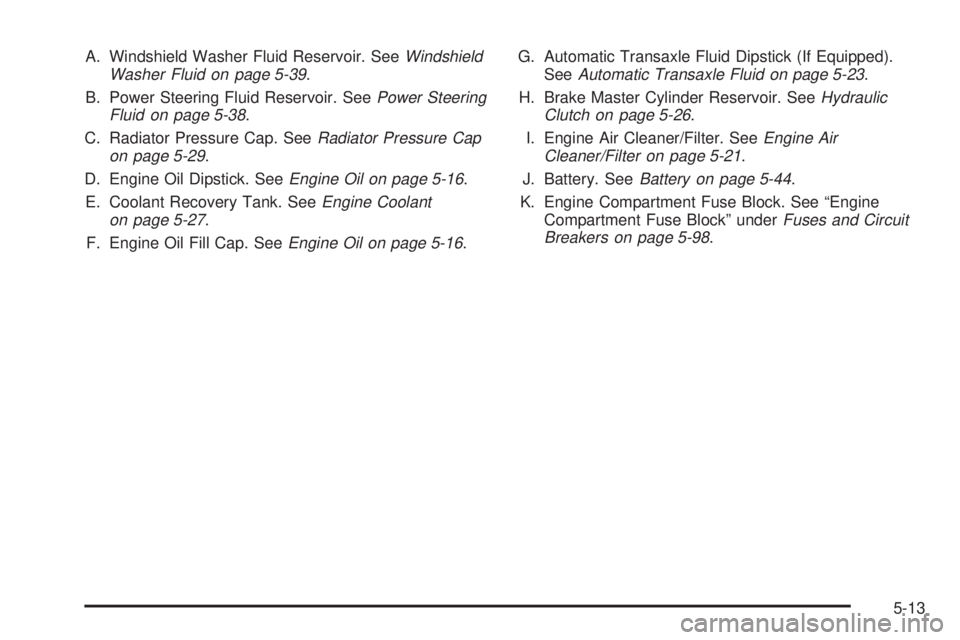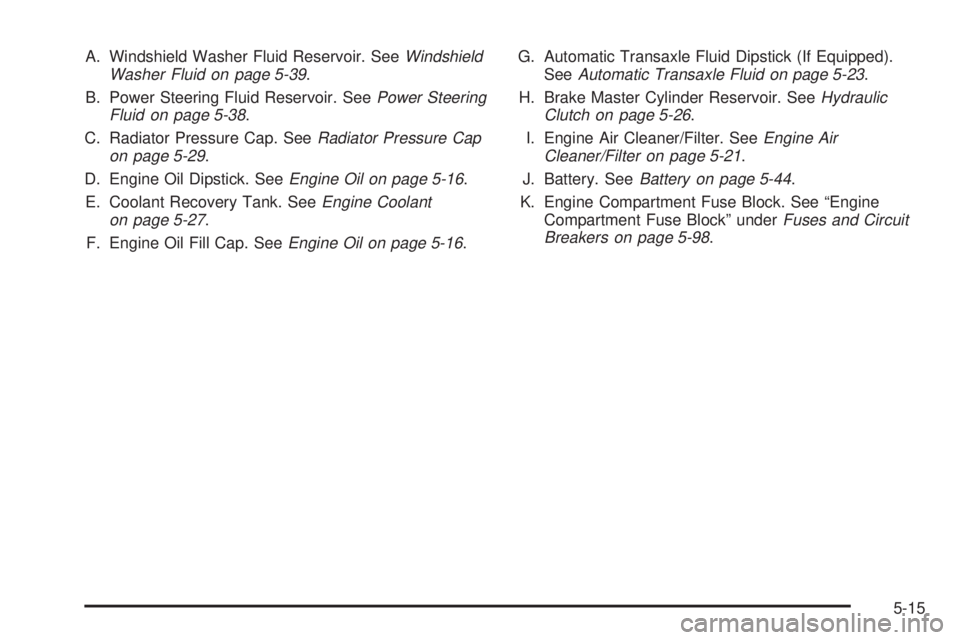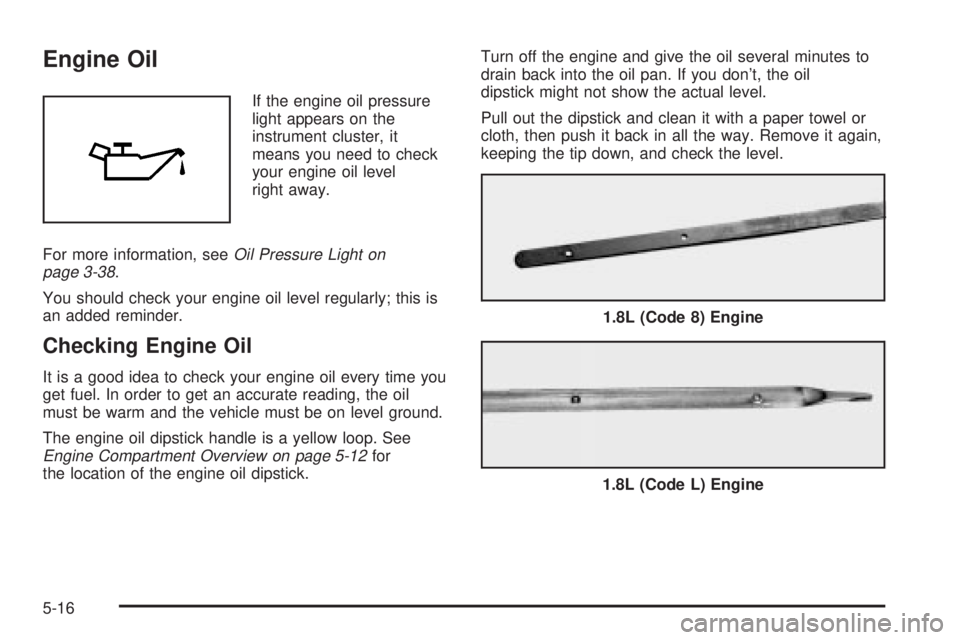Engine PONTIAC VIBE 2004 Workshop Manual
[x] Cancel search | Manufacturer: PONTIAC, Model Year: 2004, Model line: VIBE, Model: PONTIAC VIBE 2004Pages: 370, PDF Size: 2.68 MB
Page 216 of 370

Additives
To provide cleaner air, all gasolines in the United States
are now required to contain additives that will help
prevent engine and fuel system deposits from forming,
allowing your emission control system to work
properly. You should not have to add anything to your
fuel. However, some gasolines contain only the
minimum amount of additive required to meet U.S.
Environmental Protection Agency regulations. General
Motors recommends that you buy gasolines that
are advertised to help keep fuel injectors and intake
valves clean. If your vehicle experiences problems due
to dirty injectors or valves, try a different brand of
gasoline.
Gasolines containing oxygenates, such as ethers and
ethanol, and reformulated gasolines may be available in
your area to contribute to clean air. General Motors
recommends that you use these gasolines, particularly if
they comply with the speci®cations described earlier.
Notice:Your vehicle was not designed for fuel that
contains methanol. Do not use fuel containing
methanol. It can corrode metal parts in your fuel
system and also damage the plastic and rubber
parts. That damage would not be covered under
your warranty.Some gasolines that are not reformulated for low
emissions may contain an octane-enhancing additive
called methylcyclopentadienyl manganese tricarbonyl
(MMT); ask the attendant where you buy gasoline
whether the fuel contains MMT. General Motors does
not recommend the use of such gasolines. Fuels
containing MMT can reduce the life of spark plugs and
the performance of the emission control system may
be affected. The malfunction indicator lamp may turn on.
If this occurs, return to your authorized GM dealer for
service.
Fuels in Foreign Countries
If you plan on driving in another country outside the
United States or Canada, the proper fuel may be hard
to ®nd. Never use leaded gasoline or any other fuel
not recommended in the previous text on fuel. Costly
repairs caused by use of improper fuel would not
be covered by your warranty.
To check the fuel availability, ask an auto club, or
contact a major oil company that does business in the
country where you will be driving.
5-6
Page 217 of 370

Filling Your Tank
{CAUTION:
Fuel vapor burns violently and a fuel ®re can
cause bad injuries. To help avoid injuries to
you and others, read and follow all the
instructions on the pump island. Turn off your
engine when you are refueling. Don't smoke if
you're near fuel or refueling your vehicle. Keep
sparks, ¯ames and smoking materials away
from fuel. Don't leave the fuel pump
unattended when refueling your vehicle Ð this
is against the law in some places. Keep
children away from the fuel pump; never let
children pump fuel.The fuel cap is located behind a hinged door on the
driver's side of the vehicle.
5-7
Page 220 of 370

Checking Things Under
the Hood
{CAUTION:
An electric fan under the hood can start up
and injure you even when the engine is not
running. Keep hands, clothing and tools away
from any underhood electric fan.
{CAUTION:
Things that burn can get on hot engine parts
and start a ®re. These include liquids like fuel,
oil, coolant, brake ¯uid, windshield washer and
other ¯uids, and plastic or rubber. You or
others could be burned. Be careful not to drop
or spill things that will burn onto a hot engine.
Hood Release
To open the hood, do the following:
1. Pull the release handle
inside the vehicle. It's
located below the
instrument panel to the
left of the steering
wheel.
5-10
Page 222 of 370

Engine Compartment Overview
When you open the hood of the 1.8 L (Code 8) engine, you'll see the following:
5-12
Page 223 of 370

A. Windshield Washer Fluid Reservoir. SeeWindshield
Washer Fluid on page 5-39.
B. Power Steering Fluid Reservoir. See
Power Steering
Fluid on page 5-38.
C. Radiator Pressure Cap. See
Radiator Pressure Cap
on page 5-29.
D. Engine Oil Dipstick. See
Engine Oil on page 5-16.
E. Coolant Recovery Tank. See
Engine Coolant
on page 5-27.
F. Engine Oil Fill Cap. See
Engine Oil on page 5-16.G. Automatic Transaxle Fluid Dipstick (If Equipped).
See
Automatic Transaxle Fluid on page 5-23.
H. Brake Master Cylinder Reservoir. See
Hydraulic
Clutch on page 5-26.
I. Engine Air Cleaner/Filter. See
Engine Air
Cleaner/Filter on page 5-21.
J. Battery. See
Battery on page 5-44.
K. Engine Compartment Fuse Block. See ªEngine
Compartment Fuse Blockº under
Fuses and Circuit
Breakers on page 5-98.
5-13
Page 224 of 370

When you open the hood of the 1.8 L (Code L) H.O. DOHC engine, you'll see the following:
5-14
Page 225 of 370

A. Windshield Washer Fluid Reservoir. SeeWindshield
Washer Fluid on page 5-39.
B. Power Steering Fluid Reservoir. See
Power Steering
Fluid on page 5-38.
C. Radiator Pressure Cap. See
Radiator Pressure Cap
on page 5-29.
D. Engine Oil Dipstick. See
Engine Oil on page 5-16.
E. Coolant Recovery Tank. See
Engine Coolant
on page 5-27.
F. Engine Oil Fill Cap. See
Engine Oil on page 5-16.G. Automatic Transaxle Fluid Dipstick (If Equipped).
See
Automatic Transaxle Fluid on page 5-23.
H. Brake Master Cylinder Reservoir. See
Hydraulic
Clutch on page 5-26.
I. Engine Air Cleaner/Filter. See
Engine Air
Cleaner/Filter on page 5-21.
J. Battery. See
Battery on page 5-44.
K. Engine Compartment Fuse Block. See ªEngine
Compartment Fuse Blockº under
Fuses and Circuit
Breakers on page 5-98.
5-15
Page 226 of 370

Engine Oil
If the engine oil pressure
light appears on the
instrument cluster, it
means you need to check
your engine oil level
right away.
For more information, see
Oil Pressure Light on
page 3-38.
You should check your engine oil level regularly; this is
an added reminder.
Checking Engine Oil
It is a good idea to check your engine oil every time you
get fuel. In order to get an accurate reading, the oil
must be warm and the vehicle must be on level ground.
The engine oil dipstick handle is a yellow loop. See
Engine Compartment Overview on page 5-12for
the location of the engine oil dipstick.Turn off the engine and give the oil several minutes to
drain back into the oil pan. If you don't, the oil
dipstick might not show the actual level.
Pull out the dipstick and clean it with a paper towel or
cloth, then push it back in all the way. Remove it again,
keeping the tip down, and check the level.
1.8L (Code 8) Engine
1.8L (Code L) Engine
5-16
Page 227 of 370

When to Add Engine Oil
If the oil is at or below the hole at the tip of the dipstick,
then you will need to add at least one quart of oil.
But you must use the right kind. This section explains
what kind of oil to use. For engine oil crankcase
capacity, see
Capacities and Speci®cations on
page 5-101.
Notice:Don't add too much oil. If your engine has
so much oil that the oil level gets above the
upper mark that shows the proper operating range,
your engine could be damaged.
See
Engine Compartment Overview on page 5-12for
the location of the engine oil ®ll cap.
Be sure to add enough oil to put the level somewhere in
the proper operating range. Push the dipstick all the
way back in when you are through.
5-17
Page 228 of 370

What Kind of Engine Oil to Use
Look for two things:
·GM6094M
Your vehicle's engine requires oil meeting GM
Standard GM6094M. You should look for and use
only an oil that meets GM Standard GM6094M.
5-18